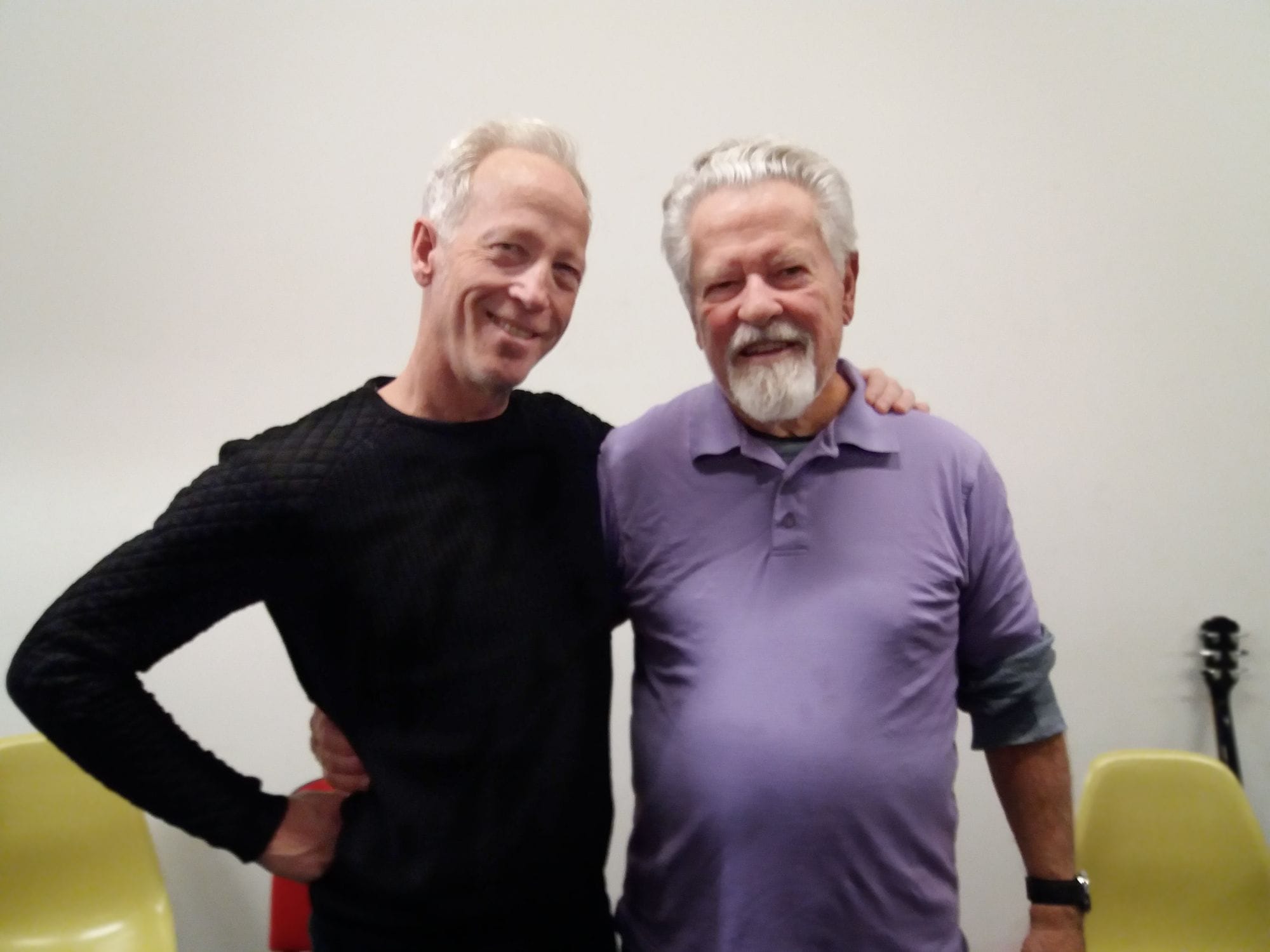Review: Touch and Go
In his upcoming book, Touch and Go, Brad Blanton is pugnacious, irreverent, exasperated and hopeful, as always a champion for constructive conflict.

Brad asked me to read the 300+ page manuscript for this book. 300 pages! I said yes. Partly that’s my improv training kicking in, “yes, and...” being the foundational precept in that art. But I was curious to see what the next chapter of Brad’s work held.
Full disclosure: I skimmed the parts I found repetitive.
Brad is passionate about communicating from the heart, and at the same time isn’t overly concerned about how that lands. His writing is pugnacious and irreverent, swinging wildly between exasperation, pessimism and hope. He’s committed to reducing suffering in the world, and if your lyin’ ass gets in the way don’t expect any quarter. Fans of profanity will not be disappointed.
Also, he clearly enjoys word play. Example:
“Keep this in mind, if you don’t mind: Never mind your mind.”
The IARPA, one of those top-secret governmental agencies Brad rails against, is creating an artificial intelligence app that can identify authors based on their style. It will have no problem distinguishing Brad's.
In Touch and Go, Brad returns to the topics that have predominated in his previous work: the importance of honesty in connecting with our fellow human beings, and of forgiveness. The new emphasis here is the importance of gracefully disconnecting. In the dance of life we need to be adept at making contact and withdrawing.
Touch and Go is a book (er, vook, ie. a video book) about improving our dance skills. But “touch and go” is also a phrase we use when an outcome is unpredictable. As I write this, societies around the world are increasingly polarized and lurching towards authoritarianism, climate catastrophe proceeds apace, and the war in Ukraine threatens to escalate into a nuclear confrontation. In other words, for humankind the stakes are high, and the outcome uncertain. There is no guarantee things will all work out for the best, so this book is attuned to our current zeitgeist.
Speaking of conflict, how should we deal with it? Brad takes the widely unpopular position that diving in head first is simply splendid. Conflict is a “resource and inspiration for social change.” That’s an inspiration that’s needed now more than ever.
But what to do when an individual—or, more problematically, a group—refuses to engage? Sometimes, even, our efforts to engage are interpreted as hostile. Are those the moments we should withdraw, at least temporarily? It’s hard to know, so we’d better get used to making mistakes now and then.
Resigned to the unavoidable certainty of human fallibility and delusion, Brad asks what would be a useful delusion, one that’s modestly more functional than what we’ve got. If there’s an answer, it’s not a new one, it’s ancient.
The Dalai Lama once answered a questioner by saying “If scientific analysis were conclusively to demonstrate certain claims in Buddhism to be false, then we must accept the findings of science and abandon those claims.” Science, in turn, subjects truth claims to rigorous tests and if a claim proves to be false it’s summarily discarded. It moves from careful observation and application of rigorous skepticism, to formulation of hypotheses, and empirical testing to see if they are valid.
Instead of replacing one fixed delusion with another, we replace the fixed interpretation with a dynamic process of finding the truth. Of course, what is true is constantly changing, depends on context, and is highly subjective. It may still be a delusion, but it’s self-correcting because it’s continually adapting to changing circumstances and new information. This process of iteratively refining our map of reality is probably the best delusion we can adopt—or the least bad.
Radical Honesty itself is such a process. This is no surprise, since Radical Honesty was influenced by Gestalt theory, and Gestalt’s founders were influenced by (Zen) Buddhism. This aspect of Radical Honesty makes it an antidote to current illiberal tendencies on the right and the left. That’s because it’s aligned with what is and rigorously skeptical of the crazy interpretations people dream up. Obviously, Radical Honesty is inimical to any ideology based on interpretation.
By the way, although doing an honesty workshop is definitely the best way to really get what it's about, the book’s detailed instructions on honesty exercises should be helpful for anyone unable to attend a workshop. This is like open-sourcing the practice of Radical Honesty for whoever wants to use it. Find a practice partner! Have a conflict! Work through it!
One of the currents that runs through Touch and Go is the conviction that our liberation from lying as individuals is intimately connected to our social and political evolution. This isn’t new, but it acquires a new urgency given the surge in divisive social movements enraptured by their own dogma. Increasingly, such movements rely on shared interpretations as badges of tribal allegiance, and are actively hostile to not only alternative interpretations, but to any attempt at a reality check. To counteract the danger of what Brad refers to as “stupid people in large groups” can we create networks of individuals fighting that trend—and outposts for those seeking refuge from it?
Can a network of honesty-cultivating communities really transform the world? Well, we already know it works in groups because that’s consistently our experience in workshops and retreats. After we clear away the secrets and the lies, what's left is love. If you haven't experienced this for yourself, you might want to try it. I believe it can work on a larger scale, and the sooner we get started, the better!
I say to groups that “telling the truth is an evolutionary act.” For me, that captures the idea that small changes in our individual behavior lead to an emergent intelligence that’s more powerful than the sum of its parts. That’s something the human species needs at this critical point in our evolution. Such a development would be revolutionary.
“This will probably be my last book,” Brad told me, which had me reflect on all the lives Brad has touched, and of the letting go that’s an inevitable part of life for us all. There’s a poignant pleasure in completion, in the period at the end of the paragraph. Touch and Go pulls together biography, philosophy, wisdom and wit in what may be Brad’s creative grand finale.
Unless, that is, his plan for cryogenic immortality works out.

